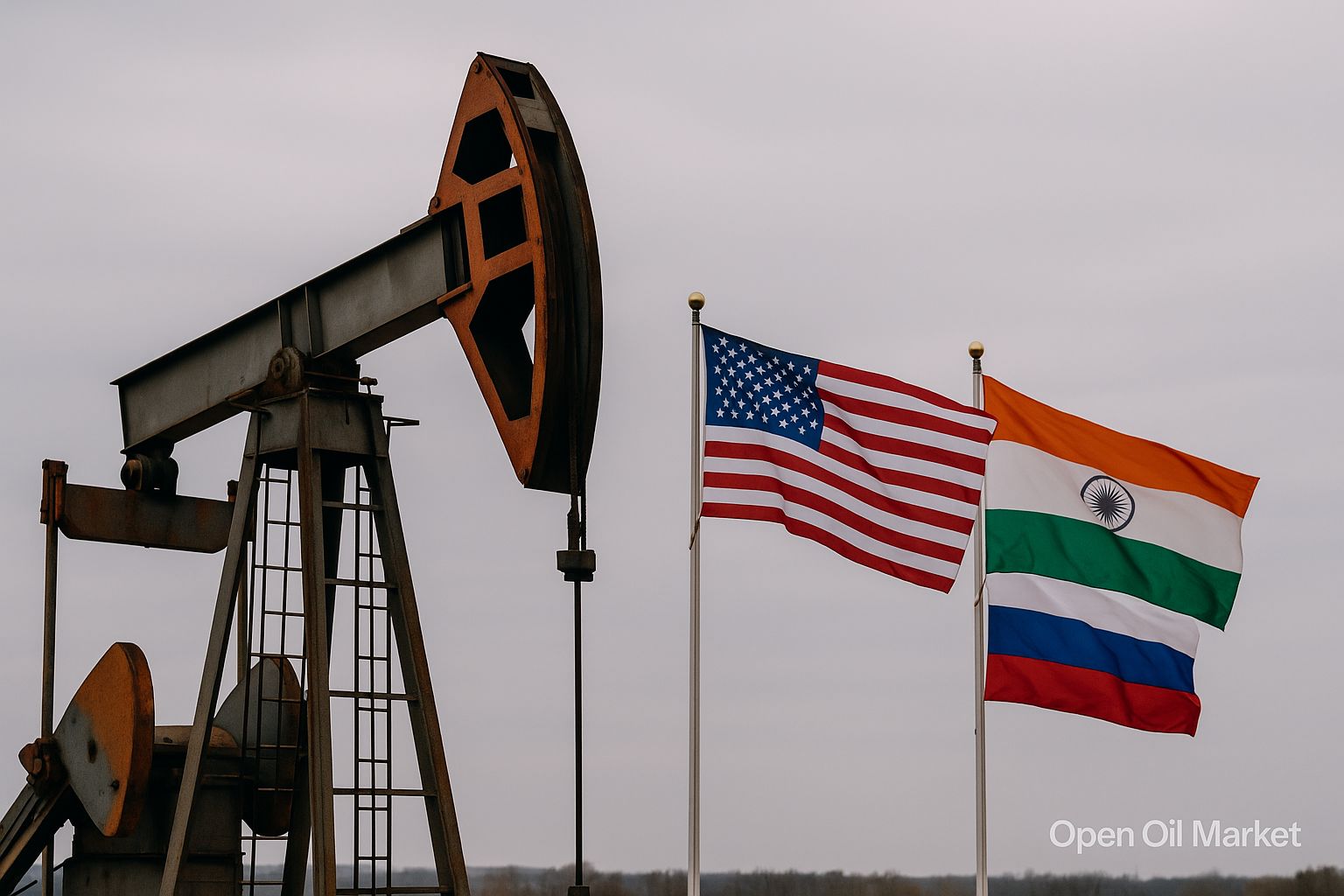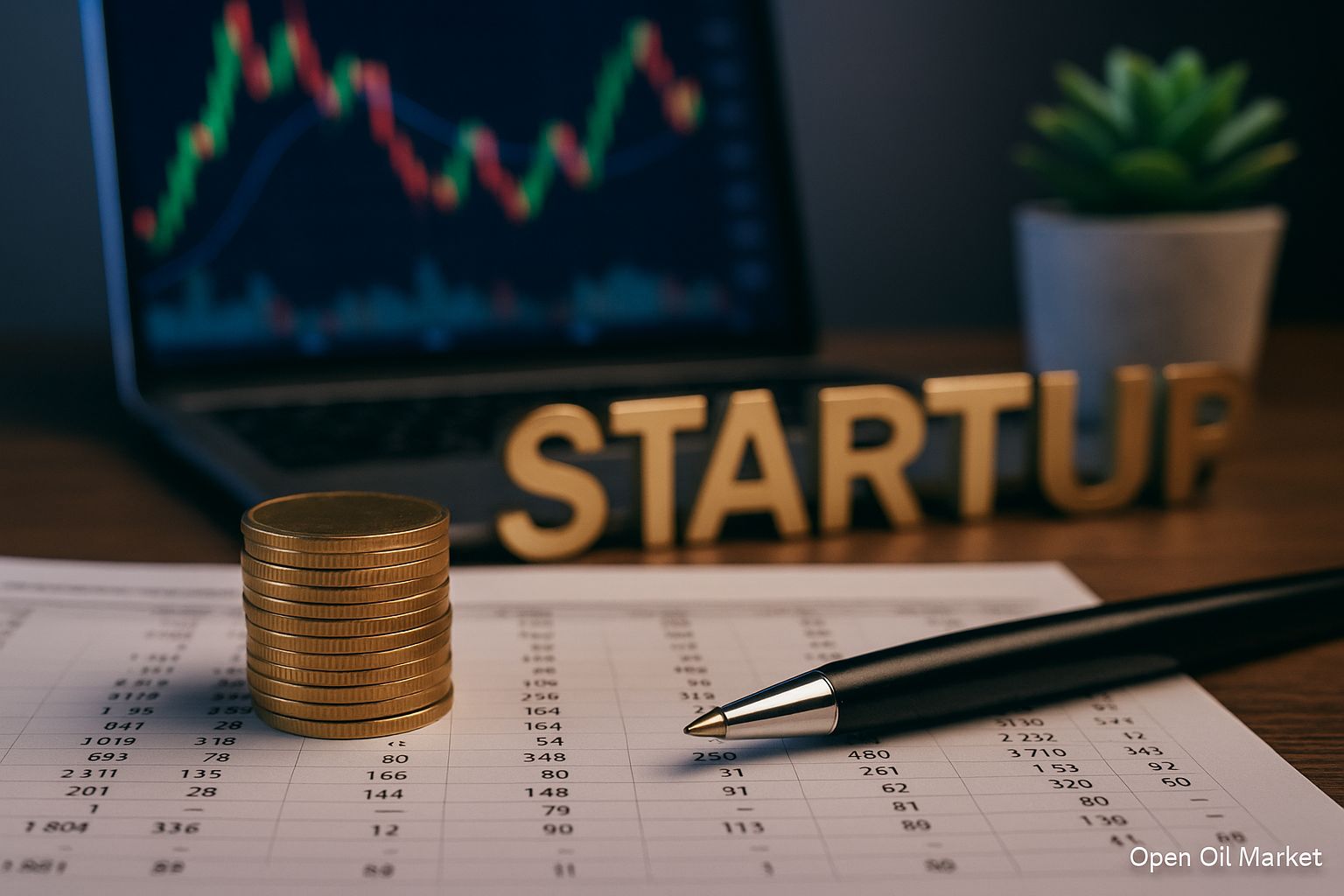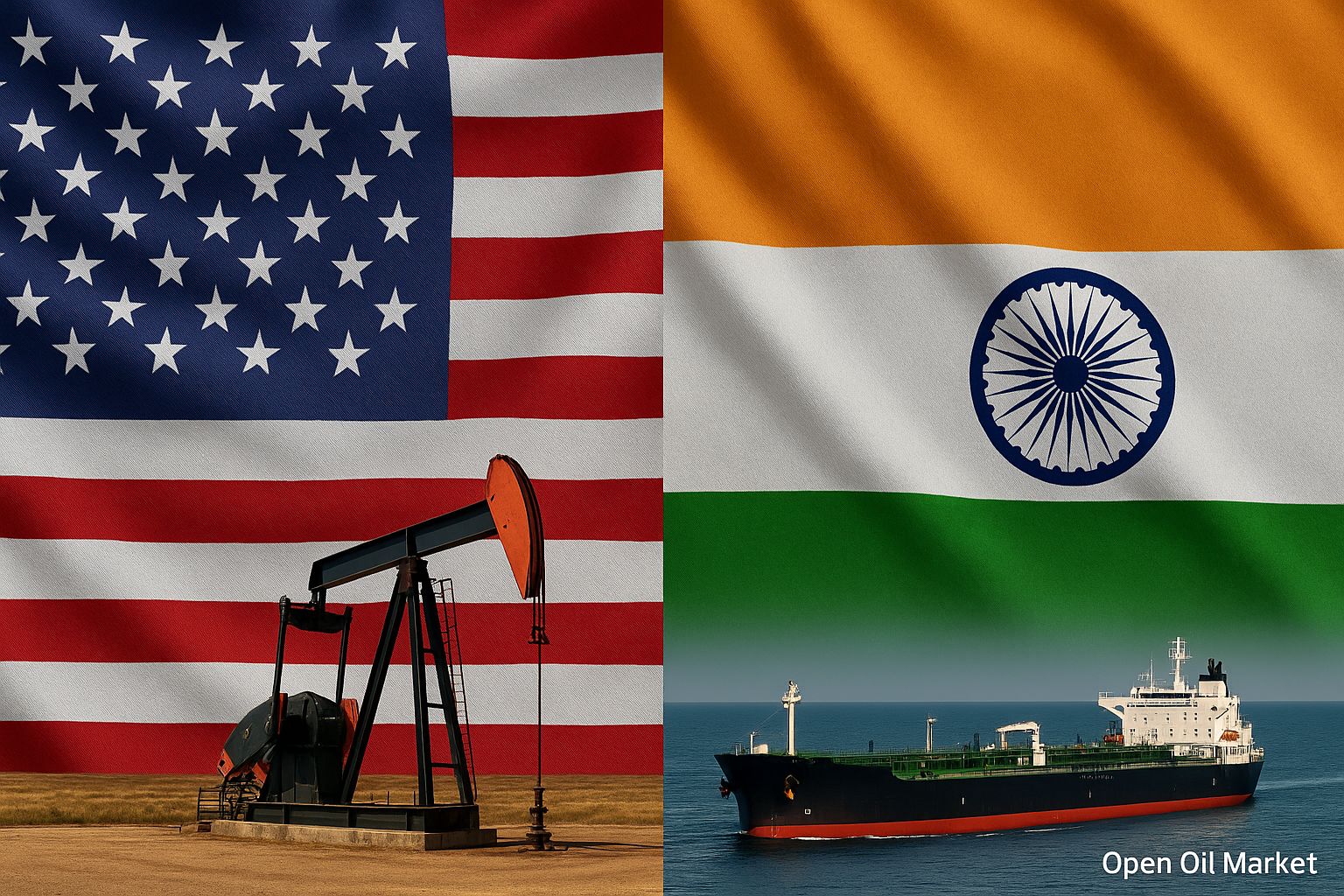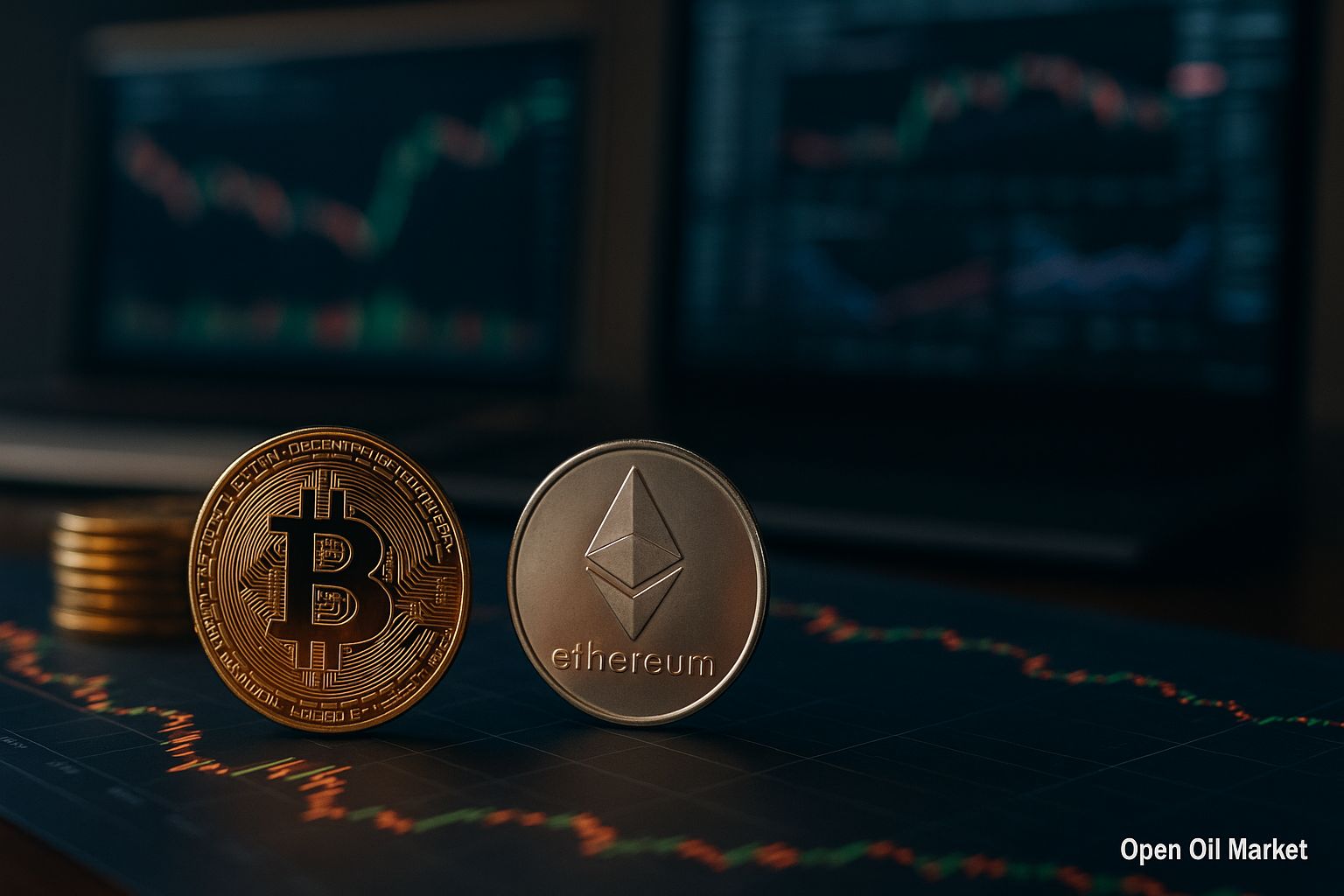
Energy Market News, Tuesday, August 5, 2025 — Trump Pressures India, Russia Restricts Fuel Exports
A recent overview of the fuel and energy complex highlights key events and trends as of August 5, 2025. The global oil market enters Tuesday in a state of relative equilibrium, albeit under some pressure: Brent crude is hovering around $69 per barrel after a recent price decline due to OPEC+’s decision to increase production and signs of weakening demand. European gas storage facilities continue to fill rapidly, now surpassing 71% of total capacity, mitigating fuel shortage risks ahead of the upcoming winter. In the domestic fuel market in Russia, authorities are implementing emergency measures to stabilize fuel prices—on August 1, a complete ban on gasoline exports was enacted to eliminate shortages at gas stations and curb price increases. Additionally, we will examine the situation in the coal sector, record growth in renewable energy, recent trends in electricity generation, as well as geopolitical factors reshaping global energy resource trade. This information will be valuable for investors and market participants in the fuel and energy complex (TEK)—ranging from oil, gas, and fuel companies to representatives in the electricity, coal sectors, and renewable energy industries.
Oil Market: Pressure from Oversupply and Demand Fluctuation
As the week begins, oil prices remain relatively stable, although the influence of oversupply factors is palpable. Following the OPEC+ alliance's decision to increase production from September and signals of slowing demand, oil prices have decreased to a weekly low. On Monday, Brent futures dipped below $69, while the U.S. benchmark WTI approached ~$67, responding to concerns over surplus supply. Nevertheless, the market finds equilibrium due to several compensating trends:
- Demand and Seasonal Factors. The global summer travel season maintains heightened demand for gasoline and jet fuel in leading economies (the U.S., China, Europe). Despite local signs of weakness—such as the lowest gasoline consumption figures in May in the U.S. since 2020—overall global oil consumption continues to grow. Analysts forecast that global demand will increase by approximately 1.2 million barrels per day in the second half of 2025, reflecting a sustained recovery in economic activity.
- Supply and OPEC+ Policy. OPEC+ countries are consistently increasing production, effectively unwinding previous cuts ahead of schedule. At an extraordinary meeting in early August, members agreed to raise the total quota by 547,000 barrels/day in September—completely offsetting one of the previously largest reductions in effect. Many key exporters are already producing close to maximum levels: for instance, Russia, Saudi Arabia, Iraq, and the UAE. Additionally, an increase in supply is expected outside OPEC+, as major companies resume projects (for example, Chevron is returning to production in Venezuela, contributing approximately 200,000 barrels/day). An increase in supply, alongside persistent economic risks, is putting a "cooling" effect on oil prices.
- Macroeconomic Conditions. The global economic environment remains mixed. On one hand, commercial crude oil inventories in the U.S. fell more than expected by the end of July, indicating active consumption and preventing prices from dropping sharply. On the other hand, there are signals of a slowing global economy: demand for raw materials in China is growing more cautiously than anticipated, and the U.S. has seen moderate job growth. However, central banks are softening their rhetoric: the U.S. Federal Reserve held the rate steady at its July 30 meeting, indicating that the tightening cycle is coming to an end. A softening of monetary policy supports investor interest in raw materials, including oil. As a result, despite the balancing effect of demand and supply factors, oil prices remain sensitive to any economic news or unexpected actions by producers.
Overall, the oil market is showing moderate equilibrium this Tuesday. Brent prices are situated within the lower part of the range observed in recent months (~$68–70) after corrections, remaining vulnerable to changes in fundamental conditions. The market is awaiting further signals—from OPEC+ (possible new production decisions) and demand data—that will determine price direction in the coming weeks.
Gas Market: Record Stocks Reduce Winter Risks
The European natural gas market continues to accumulate stocks ahead of the heating season at unprecedented rates. According to Gas Infrastructure Europe, underground storage facilities in EU countries are now filled to over 71% of total capacity—an extraordinarily high level for early August compared to previous years. In absolute terms, reserves exceed 75 billion cubic meters of gas. Several factors have enabled this rapid progress:
- A relatively mild past winter, resulting in lower than usual gas withdrawals during the cold season.
- A reduction in gas consumption in European industry and energy sectors due to conservation measures and a shift to alternative sources following high prices in recent years.
- High supplies of liquefied natural gas (LNG)—approximately 12 billion cubic meters of LNG (primarily from the U.S., Qatar, and other exporters) entered Europe in June, setting a record for summer month imports. Preliminary estimates suggest that this trend persisted close to maximum levels in July.
Due to high stock levels and diversified supplies, gas prices in Europe this summer have remained relatively stable. Prices at the largest hub, TTF, are significantly below the peak crisis levels of 2022, fluctuating in a consumer-friendly range (although still above the pre-crisis average). According to the IEA, average wholesale gas prices in Europe for 2025–2026 are expected to remain above $400 per 1,000 cubic meters due to structural market changes—higher than historical norms but significantly lower than the extremes observed during the energy crisis. Record-high utilization of underground storage reduces the likelihood of sharp price spikes this winter, which is positively received by investors and industrial consumers. At the same time, market participants are closely monitoring the EU's steps towards enhancing energy security: Brussels has extended mandatory storage filling regulations for another two years (with the goal of at least 90% capacity by the beginning of each winter season). Additionally, discussions are underway at the EU level regarding new restrictions on Russian gas imports in an effort to finally reduce dependence on shipments from the RF. While fully abandoning Russian gas supplies in the short term is challenging (some countries, such as Hungary, still heavily rely on gas from Gazprom under long-term contracts), building substantial reserves and diversifying sources has notably strengthened Europe’s position as winter approaches.
Russian Fuel Market: Export Ban and Price Stabilization
The internal market for petroleum products in Russia has faced tension this summer due to a sharp increase in gasoline and diesel fuel prices. In July, exchange prices for automotive gasoline on the St. Petersburg International Commodity Exchange reached historical highs: the Ai-95 grade rose above 77,000 rubles/ton, breaking records and placing increased burdens on independent gas stations and consumers. The causes of the crisis are a combination of high seasonal demand and limited supply. Demand for fuel surged from the agricultural sector (harvesting campaign) and the tourism industry during summer, while supply decreased due to scheduled maintenance work at several oil refineries (refineries) in June and July. The situation was further exacerbated by the behavior of certain large producers: as established by the Federal Antimonopoly Service (FAS), some oil companies significantly reduced fuel sales on the exchange while attempting to take advantage of high export prices. In particular, at the end of spring, a subsidiary of Gazprom reduced sales of Ai-92 gasoline by 74% and Ai-95 by 50%, causing a local shortage and price spike.
The Russian government, in collaboration with oil producers, promptly implemented a range of measures to stabilize the fuel market. Key steps taken include:
- Complete Export Ban on Gasoline. Starting from August 1, 2025, authorities have enacted a temporary ban on gasoline exports by all producers. Previously, from March, partial export restrictions for independent traders were in place, but the ban has now been extended to cover the entire market to direct maximum volumes of gasoline towards domestic needs. The embargo is officially imposed until August 31 inclusively, but authorities do not rule out extending the restriction into September if necessary.
- Financial Dampening and Trade Control. Monitoring of petroleum product trading has increased; the government is utilizing the damping mechanism more actively—it limits excess profits from fuel exports. If the alternative export price significantly exceeds the baseline indicative price, budget payments to oil companies are reduced, decreasing the incentive to send fuel to the external market. This approach motivates producers to saturate the domestic market. Simultaneously, there are plans to raise mandatory sales norms for fuel on the exchange (above the current 15% of production volume for gasoline) to increase the supply in the exchange segment and mitigate the frenzy.
The market has already responded to the announced interventions: in the second half of July, wholesale prices stopped rising, and in certain segments, a decline has even been noted. By the end of trading on July 25, the price of Ai-92 gasoline decreased by about 1.5% (to ~65,300 rubles/ton), while Ai-95 dropped by 1.1% (to ~75,400 rubles/ton) amid expectations of the export ban. Although price levels remain close to record highs, the state’s intervention has helped shift the trend and bring the market closer to stabilization. Diesel fuel, experiencing less shortage, has virtually stopped rising. It is expected that the pace of retail price increases for gasoline and diesel will noticeably slow in August, as oil companies attempt to keep prices stable, anticipating an imminent lifting of the export ban. However, there remains a significant likelihood of retaining stringent restrictions into September—until seasonal demand decreases in the fall.
Experts note that the further price dynamics will depend on the duration of the export embargo and the effectiveness of accompanying measures. Administrative actions may likely help contain fuel price increases in August–September. However, should the prohibition be lifted prematurely in the fall, a new round of price growth may occur, as the root causes of the imbalance (low gasoline stocks and limited refinery capacity during maintenance) have yet to be fully addressed. The government must balance the need to control prices for consumers while providing sufficient incentives for producers to prevent a recurrence of fuel shortages during fall agricultural work and the start of the heating season.
Coal Sector: Record Production Amid Modest Demand
The global coal sector is demonstrating historically high production volumes in 2025, although consumption growth is slowing significantly. According to forecasts from the International Energy Agency (IEA), global coal production this year could reach approximately 9.2 billion tons, setting a new record. The principal contribution to this increase comes from China, where ramping up domestic coal production remains part of the energy security strategy. Simultaneously, many countries are declaring plans for a phased exit from coal in their energy balance and a move to cleaner sources, causing global demand to grow at a much slower pace than production.
In Russia, coal continues to hold a significant share in both electricity production and export revenue in the sector. Production by Russian companies remains near record levels, and amidst sanctions, the coal industry is actively reorienting towards Asian markets. The government supports exporters by investing in the expansion of port infrastructure in the Far East and subsidizing railway transportation to boost supplies to the Asia-Pacific region. Looking ahead, despite the sustained importance of coal to the economy, the sector will need to modernize and improve environmental sustainability—considering the global trend towards reducing carbon emissions. In the medium- to long-term, coal companies will increasingly face challenges associated with the "green" transition, although coal will remain in demand for providing base energy supply in several countries in the coming years.
Renewable Energy: Accelerated Capacity Growth and Environmental Effects
Renewable energy sources (RES) continue to rapidly gain weight in the global energy balance—this trend is also evident in Russia. According to the Renewable Energy Development Association (ARVE), over the past year, domestic solar and wind plants have prevented the emission of around 8 million tons of CO2. Currently, the share of generation based on RES in Russia's power system remains small (accounting for only a few percent), but it is increasing quickly. In 2025 alone, dozens of new wind farms and solar plants are being commissioned—especially many projects are being realized in southern regions and the Far East. Additionally, pilot initiatives for the utilization of small hydropower and biofuels are being launched, diversifying "green" energy.
Global trends indicate record rates of clean energy development. The largest investor in RES remains China: in the first five months of 2025, approximately 46 GW of new wind capacity and about 200 GW of solar capacity were installed in China—an unprecedented scale, resulting in more than 90% of all new energy capacities added in China this year coming from renewable sources. At the same time, to cover base loads, China continues to build modern coal-fired power plants, although the share of coal in overall generation is gradually decreasing. In western countries, renewable energy has practically replaced coal: the variable nature of solar and wind energy is compensated by gas-fired power plants and energy storage systems. All of this signals a global turning point in the energy landscape. Investments worldwide are increasingly shifting towards RES, while carbon-intensive industries are compelled to adapt to new realities. For energy sector investors, the “green” trend opens vast opportunities—from participation in solar and wind power projects to modernization of grid infrastructure and energy storage systems.
Electricity Sector: Reduced Generation and Rising Tariffs
In the electricity sector in Russia, a slight decline in total electricity production has been recorded at the end of the first half of 2025 compared to the same period last year. According to Rosstat, the total generation for six months amounted to about 600 billion kWh, which is 1.9% lower than a year ago. The main reason for the decrease is an extremely low water year, leading to diminished generation at hydropower plants. Specifically, production at hydropower plants from January to June decreased to approximately 98 billion kWh (−12% compared to the first half of 2024). Meanwhile, other segments compensated for some of the lost energy: thermal power plants (TPPs) generated about 394 billion kWh (+0.5% year-on-year), and nuclear plants produced approximately 104 billion kWh (−0.3%). Thus, the share of thermal and nuclear power in the generation structure increased, whereas the contribution of hydropower plants decreased due to natural factors.
Another significant event for the sector was the change in electricity tariffs. Starting from July 1, 2025, a planned annual price indexation for the population and businesses was conducted: electricity tariffs (as well as for utilities) increased on average by 11–12% across the country. Such a substantial increase, instituted by the government, is intended to help energy companies compensate for inflationary pressures and invest in infrastructure maintenance. However, the rise in payments significantly increases the burden on industries and households. In response, the authorities announced support measures: targeted subsidies will be introduced for low-income citizens to mitigate the effects of rising tariffs. Regulators have also noted that in the coming years, the pace of tariff growth will slow (expected to be around +9% in July 2026). For investors in the electricity sector, rising tariffs represent potential revenue increases for energy supply and generating companies, although the government remains vigilant to ensure that tariff policies do not stoke overall inflation or hinder economic growth.
Geopolitics and Energy Resource Trade: Restructuring Global Flows
Geopolitical factors continue to exert significant influence on global energy resource trade, causing a redistribution of oil, gas, and coal flows between regions. One notable phenomenon is the sharp decrease in energy commodity turnover between the U.S. and China amid worsening relations. In June 2025, China did not purchase any oil, liquefied gas, or coal from the U.S. for the first time in nearly three years (according to Bloomberg). Experts attribute this fact to rising trade tensions and Beijing's desire to diversify supply sources. China is increasing its oil imports from Middle Eastern and African countries while simultaneously ramping up purchases of Russian raw materials at reduced prices (Urals crude is trading at a discount). A similar pattern is unfolding in the gas sector: substantial volumes of LNG are arriving in China from Qatar and Australia, effectively bypassing American gas.
Concurrently, Washington is intensifying pressure on Russia and its partners in energy trade. U.S. President Donald Trump this week threatened to impose high (up to 100%) tariffs on countries buying Russian oil, aiming to limit Moscow's revenues and hasten the conclusion of the conflict in Ukraine. In particular, India, the largest maritime purchaser of Russian oil, appears to be at risk. Already on August 1, the Trump administration imposed a 25% import tariff on certain Indian goods, justifying it with ongoing purchases of Russian oil and processing it into petroleum products for re-export. These steps raise uncertainty regarding the future fate of significant volumes of Russian exports—primarily shipments to India and China—and could lead to a reshuffling of global oil flows. Nevertheless, major developing consumers are expressing intentions to maintain cooperation with Russia: media reports suggest that India and Brazil do not plan to forgo purchases of Russian oil despite external pressures. This underscores these countries' commitment to pursuing an independent energy policy based on their economic interests.
In Europe, meanwhile, the course to reduce dependence on Russian energy carriers continues. Imports of Russian oil and petroleum products to the EU have been effectively halted by the existing embargo, and pipeline gas supplies have been reduced to minimal levels. The European Union is actively developing infrastructure for receiving LNG (new terminals are being built, and long-term contracts are being signed with alternative suppliers) to replace the volumes lost. However, completely abandoning Russian gas instantly is challenging: some countries (such as Hungary) still significantly depend on Gasprom gas under active contracts. This creates discord within the EU—Budapest has already signaled that if a ban on Russian gas is set at the EU level, Hungary will seek direct solutions with Moscow. Such signals indicate a lack of full unity in the bloc's position on energy security issues.
Overall, global energy trade is undergoing a phase of transformation under the influence of sanctions, trade disputes, and strategic decisions by states. While oil, gas, and coal price dynamics continue to be largely driven by fundamental factors of supply and demand, political actions can quickly change the availability of certain energy carriers for entire regions. The fuel and energy complex industries are entering the second half of 2025 in a state of relative balance, but with clear signs of impending changes:
- Oil Market: remains relatively stable thanks to producer coordination, but is highly sensitive to economic risks and potential sanction shocks.
- European Gas Market: approaches winter with record gas stocks, significantly reducing concerns about sharp price spikes during the cold period.
- Russian Fuel Market: is increasingly being regulated by the state; such "manual" measures are likely to become the new norm in the near future to prevent supply crises.
- Global Energy Transition: renewable energy is setting records for new capacity installations while the coal industry is at a peak before an anticipated downturn.
For companies and investors, this situation necessitates adapting to new realities: flexibly responding to market conditions and seeking opportunities in rapidly growing segments (such as RES), while remaining alert to the simultaneous impacts of market and geopolitical factors. The current state of the fuel and energy complex demonstrates relative stability; however, clear signals of change point to the formation of a new energy landscape that market participants must be prepared for.




